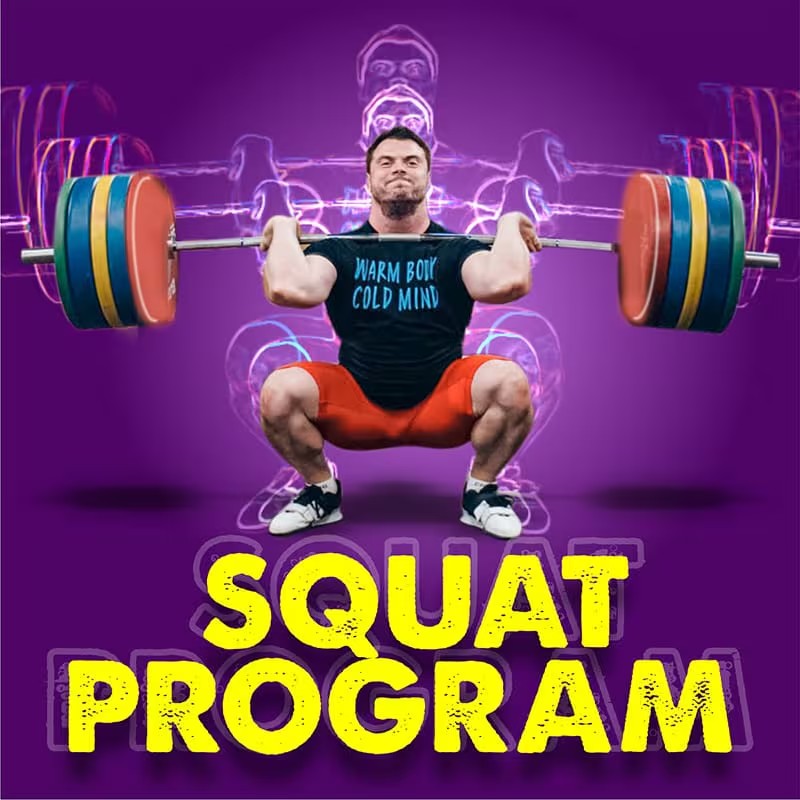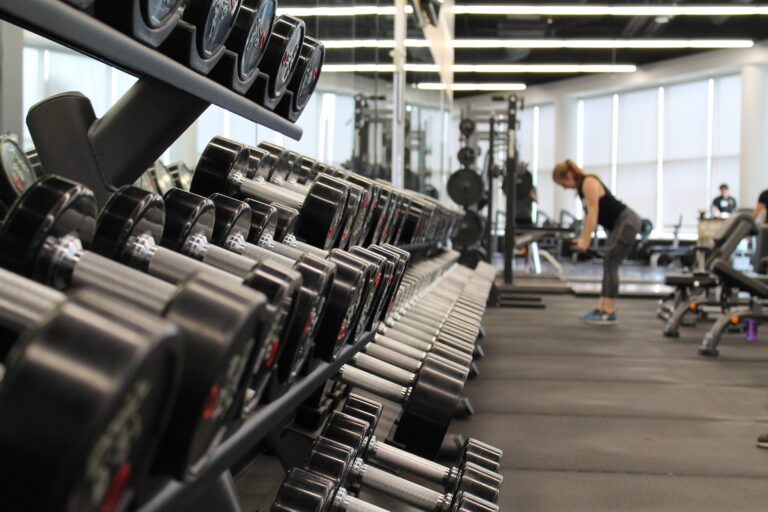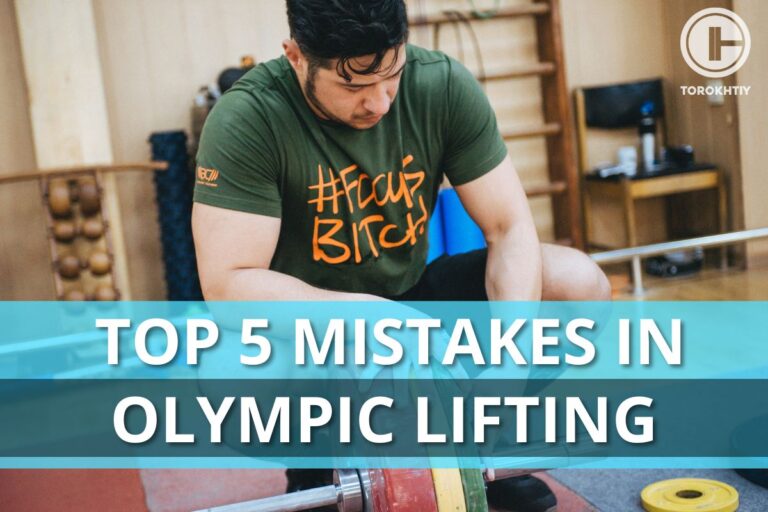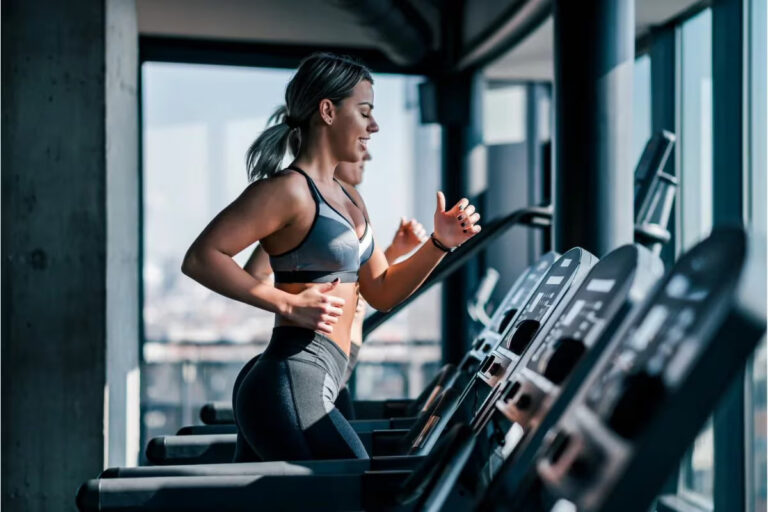Squat and Deadlift Same Day: Right or Wrong?
Squat and deadlift same day is a question that gets thrown around the gym all the time. Both are compound exercises as they involve several muscle groups in one single movement, making them perfect for gaining strength and size. With the countless benefits of squatting and deadlifting, it can be difficult to know where both exercises should fit into your routine.
So, should these exercises be separated, or can you do squat and deadlift same day?
Squat and deadlift same day is a way of including both exercises in a program, but it’s worth considering the potential risks and benefits. When doing deadlift and squat same day, it’s wise to adjust the volume and intensity of your sets to ensure you can complete both exercises effectively.
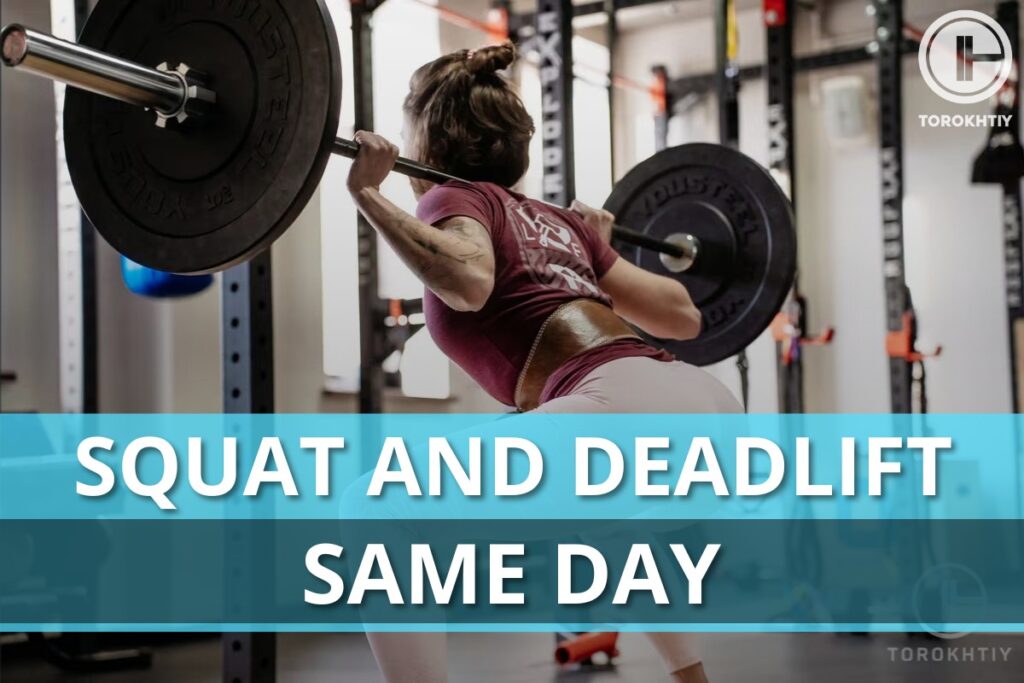
Can You Do Squats and Deadlifts On The Same Day?
It’s possible to include a squat and deadlift workout in your training program, but it’s best to first take a moment to see if it will be beneficial for your goals. Both of these compound exercises are taxing, recruiting large muscle groups to complete the movement. This requires a considerable amount of effort, along with focus and stability.
Completing squats and deadlifts on the same day can be a lot for your body to handle, especially if you’re a beginner in the early days of your gym journey. Performing heavy sets of squats, followed by heavy deadlifts, will likely fatigue you quickly. This means you may not perform the second exercise as well as you could have if you were to tackle it on another day.
If you’re set on including squats and deadlifts on the same day, it’s best to lift less weight than you typically would with these exercises. Lifting lighter means you are more likely to have better form throughout every repetition, rather than being too fatigued to complete each exercise safely and effectively.
3 Potential Risks Of Doing Squats and Deadlifts On The Same Day
Many ask ‘can you deadlift and squat on the same day’ and the short answer is yes, but there are some risks worth being aware of before you include both exercises in the same training session. These risks can be minimized by lowering weight, and keeping an eye on how your body feels when performing each exercise.
1. Increased Injury Risk
Squats and deadlifts require the use of diverse muscle groups, targeting various parts of the body. When included in the same training session, this means a substantial amount of the body is being used, which can cause fatigue, leading to potential loss of focus and an increased injury risk.
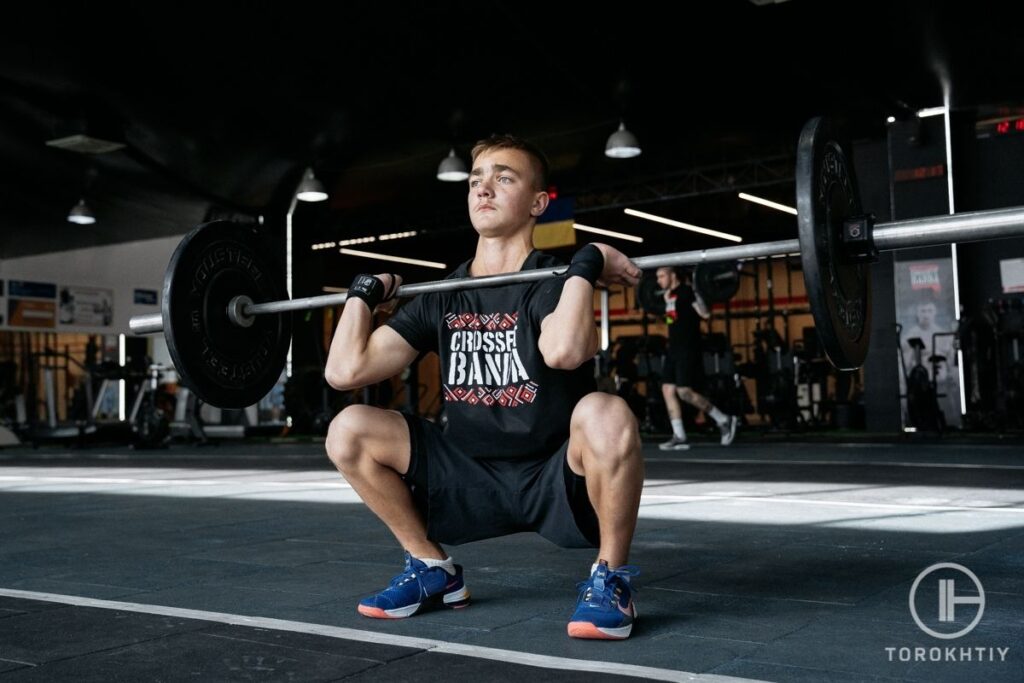
2. Poor Performance With Second Exercise
As deadlifts and squats are compound movements, they harness energy from multiple areas. You will have far more energy when completing the first exercise as you will be fresh and ready to kickstart your session. After completing a tough final set, however, your energy will be depleted, and this may lead to a poor performance with the second exercise.
3. Low Energy For Rest Of Workout
Squat and deadlift same day can result in low energy for the rest of your workout. Whether you planned on doing a cardio finisher, or a quickfire core workout at the end of your session, you may not have enough energy in the tank! When we have low energy, and begin to feel tired, it can be easy to lose focus and let form slip, so this is something to be mindful of when doing deadlifts and squats on the same day.
Tips From the Champ
Adding a finisher to a workout is a great way to shake up your training and give yourself a challenge. If you plan on completing a finisher, it may be best to choose a session where you aren’t doing both squats and deadlifts, as this will substantially affect your energy levels.
Olympic Weightlifting Champion
3 Benefits Of Doing Squats and Deadlifts On The Same Day
Alongside looking at the risks of doing squats and deadlifts on the same day, it’s wise to keep things balanced and assess the benefits too. By exploring both sides of the story when it comes to deadlift and squat same day, you can better work out if including both in one session is the right decision for you.
✅ Ideal For Hypertrophy
Many factors influence hypertrophy such as training volume and intensity, so performing squats and deadlifts on the same day can have a positive effect. Although both exercises include different movements, they use similar muscles in the back, glutes, and legs. Completing a squat and deadlift workout means activating these muscles and pushing them hard, which increases the training volume.
🔻12 Week Squat Program by Oleksiy Torokhtiy
Do you want to double your squat strength? In just 12 weeks, you’ll be able to boost your squat results.
This program transforms any ordinary squat into a powerful athletic movement.
What’s included:
- 12 weeks of squat programming;
- Effective combination of sets, reps, and weights;
- Fully designed and coached by Oleksiy Torokhtiy;
- Over 60+ movements, banded work, and weight training;
- Accessory work for core, joint stability and injury prevention;
- Max out on back squat and front squat at the end.
Start now and boost your squat results!
✅ Warm For Second Exercise
Getting the body efficiently warmed up can be beneficial for exercise performance, so completely both in the same workout means you’ll be warmed up for the second exercise. This allows you to spend less time getting your body warmed up, as your muscles will be ready to hit the bar. This doesn’t mean you shouldn’t complete a few exercise-specific warm-up movements though, as it’s still wise to get the body and mind in focus for the way it has to move for different exercises.
🔻12-Week Deadlift Strength Program by Oleksiy Torokhtiy
Unlock your true potential with our Deadlift Strength Program!
Designed for athletes by 2-time Olympian Oleksiy Torokhtiy, this 12-week program focuses on enhancing your deadlift strength, strengthening your back and legs.
Program details:
- 12 weeks;
- 3 days / week;
- 45-120 minutes per session;
- 50+ specific exercises;
- Focus on New Result in Deadlift;
- One-time payment, no recuring payments;
- Full access to all training content.
Start now and boost your deadlift results!
✅ Time Efficient
Some days, it can be hard to find a substantial chunk of time to dedicate to the gym. Time efficient workout can be your best friend, especially on days when you have a limited time to get in, lift, and get out of the gym! Many ask ‘should you squat and deadlift on the same day’; if you have a limited gap to train, working out in this way will save you time whilst delivering results and progress too.
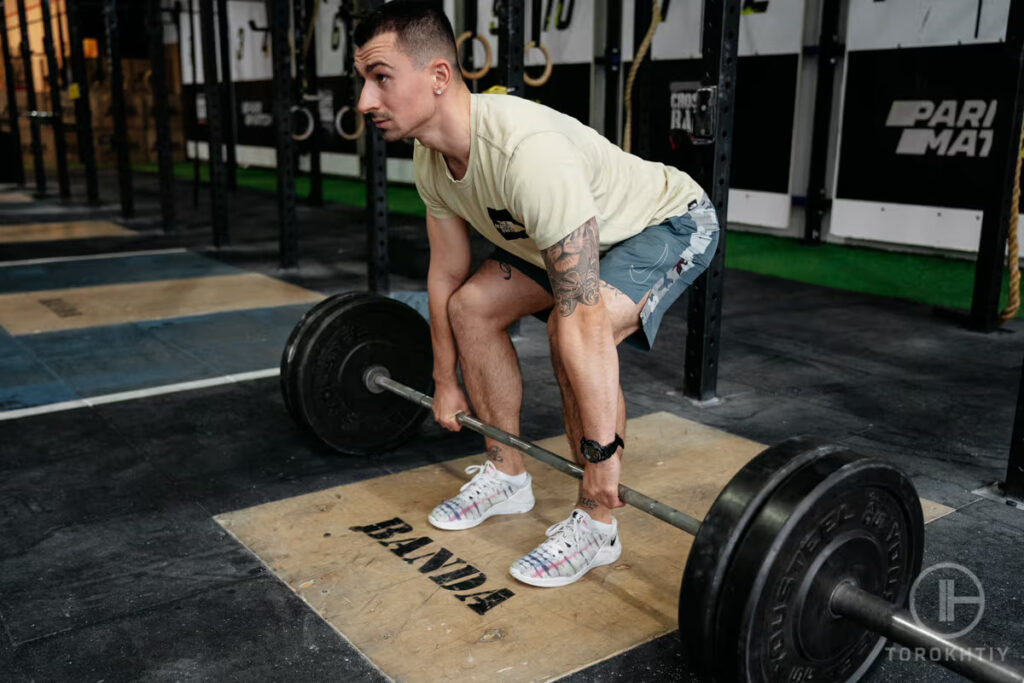
How To Perform Both Squats and Deadlifts Safely The Same Day?
Performing deadlift and squat same day can be a valid way of training, but it’s important to adjust the weight you’re lifting to minimize injury risk and ensure you have enough energy to complete the second exercise correctly and effectively.
On a day when you’re doing squats and deadlifts together, be sure to lower the weight you’d normally lift when doing the exercises separately. This will account for muscle fatigue and overall reduced energy levels so you can get the most from both movements.
Workout 1 – Lower Body
| Exercise | Reps | Sets |
|---|---|---|
| Squat | 8-10 | 3 |
| Deadlift | 8-10 | 3 |
| Hamstring Curl | 8-10 | 3 |
| Forward Lunge | 8-10 | 3 |
Optional Core Finisher:
Set a timer for 5 minutes and complete this ab sculpting core finisher. When completing each exercise, ensure you’re making the mind-to-muscle connection and engaging your core throughout. This will help you feel the movements more in your abs instead of straining your lower back.
| Exercise | Reps |
|---|---|
| Crunches | 10 |
| Leg Raises | 10 |
| Russian Twists | 10/side |
| Plank | 20s |
Workout 2 – Lower Body
| Exercise | Reps | Sets |
|---|---|---|
| Squat | 8-10 | 3 |
| Deadlift | 8-10 | 3 |
| Leg Press | 8-10 | 3 |
| Walking Lunge | 8-10 | 3 |
Optimal HIIT Finisher:
Getting the heart working hard and pumping blood around the body is great for cardiovascular health. HIIT workouts are typically fast-paced short workouts to get you pushing the last bit of energy you have into your training session. Set a timer for 10 minutes and complete this finisher if you think you’re up for the challenge!
| Exercise | Reps |
|---|---|
| Jumping Jacks | 10 |
| Burpees | 10 |
| Mountain Climbers | 10/leg |
| Plank Hip Dips | 10/side |
FAQ
Should You Deadlift After Squat?
As deadlifts may result in more activation in the back than squats, it’s best to squat first and deadlift second. Ideally, you don’t want your back muscles to be too fatigued before squatting, as it’s imperative to squat with correct form and technique to minimize injury risk. It boils down to fatigue and personal ability, but the most important thing to remember is to lift safely, as compound movements such as deadlifts and squats require an abundance of focus, concentration, and energy.
Can I Skip Squats If I Deadlift?
Squats and deadlifts each have different benefits, targeting diverse muscles with some overlaps in the back and lower body. With many variations of both exercises, it’s wise to incorporate both into your workout routine to get the most out of the movements. A squat and deadlift workout can be completed safely and efficiently given a reduction in the weight lifted.
Is Squatting and Deadlifting Twice A Week Too Much?
Depending on your goals and ability, squatting and deadlifting twice a week can be effective to include in your training plan. Recovery time is vital for all sports, and resistance training is no exception! You need to give your body time to rest and recover after sessions, so try and leave a couple of days in between squatting and deadlifting to rest your muscles and see better results in your sessions.
Conclusion
Should you squat and deadlift on the same day is a topic I always hear talked about, and there are a range of risks and benefits to consider. Including squat and deadlift on same day can be advantageous for hypertrophy, but lowering weight and adjusting rep ranges will help save energy to complete the second exercise with good form.
Do you complete squats and deadlifts on the same day? Or do you separate both exercises throughout your weekly sessions?
Referenses:
- Michal Krzysztofik, Michal Wilk, Grzegorz Wojdala, and Artur Golaś, “Maximizing Muscle Hypertrophy: A Systematic Review of Advanced Resistance Training Techniques and Methods”, National Center For Biotechnology Information, https://www.ncbi.nlm.nih.gov/pmc/articles/PMC6950543/, (Accessed February 8 2024)
- Sébastien Racinais, Scott Cocking, and Julien D. Périard, “Sports and environmental temperature: From warming-up to heating-up”, National Center For Biotechnology Information, https://www.ncbi.nlm.nih.gov/pmc/articles/PMC5605167/ (Accessed February 8 2024)
- Federico Nigro and Sandro Bartolomei, “A Comparison Between the Squat and the Deadlift for Lower Body Strength and Power Training”, National Center For Biotechnology Information, https://www.ncbi.nlm.nih.gov/pmc/articles/PMC7386153/ (Accessed February 8 2024)
- Gregory D. Myer, Adam M. Kushner, Jensen L. Brent, Brad J. Schoenfeld, Jason Hugentobler, Rhodri S. Lloyd, Al Vermeil, Donald A. Chu, Jason Harbin, and Stuart McGill, “The back squat: A proposed assessment of functional deficits and technical factors that limit performance”, National Center For Biotechnology Information, https://www.ncbi.nlm.nih.gov/pmc/articles/PMC4262933/ (Accessed February 8 2024)
- Róhán Doherty, Sharon M. Madigan, Alan Nevill, Giles Warrington, and Jason G. Ellis, “The Sleep and Recovery Practices of Athletes”, National Center For Biotechnology Information, https://www.ncbi.nlm.nih.gov/pmc/articles/PMC8072992/ (Accessed February 8 2024)
Why Trust Us?
With over 20 years in Olympic Weightlifting, our team does its best to provide the audience with ultimate support and meet the needs and requirements of advanced athletes and professional lifters, as well as people who strive to open new opportunities and develop their physical capabilities with us.
By trusting the recommendations of our certified experts in coaching, nutrition, dietology, and sports training programming, as well as scientific consultants, and physiotherapists, we provide you with thorough, well-considered, and scientifically proven content. All the information given in the articles concerning workout programming, separate exercises, and athletic performance, in general, is based on verified data. We ensure that you can rely on our professionals’ pieces of advice and recommendations that can be treated as personalized ones which will benefit you and fully meet your needs.
The product testing process is described in more detail here
Author: Jason Li
Personal Coach, Functional Range Conditioning Mobility Specialist
Jason is an NYC personal training expert and National level Olympic Weightlifting Coach with over 10 years of experience training everyday clients to high levels of performance. He has trained everyone from youth (13 years old and under) to masters (60+ years old) to regional and national rankings for powerlifting, Olympic Weightlifting, Short distance (up to 200m) sprinting, discus & hammer throwing.


